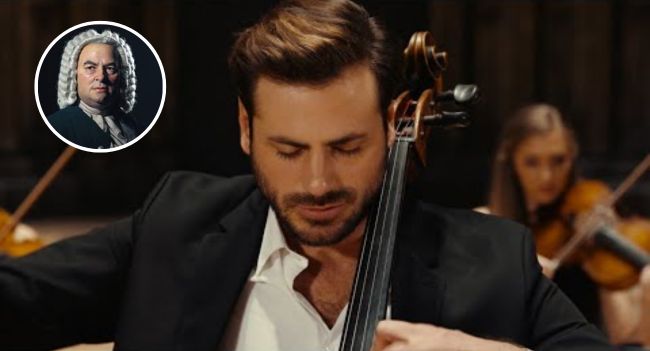It’s funny how certain pieces of classical music attract nicknames — soubriquets that maybe help them stick in the mind and create ideas of what they’re about. There are numerous symphonies by Haydn or various piano sonatas by Beethoven that spring to mind.
They tend to have one thing in common — the nicknames are hardly ever anything to do with the composer or their intentions. They’re usually the brainchild of an enthusiastic publisher or super fan.
That’s definitely the case with Bach’s Air from the Orchestral Suite No.3 It’s known as “Air on a G String.” But why? It’s not even in the key of G — it’s in D. Well settle down with a cup of coffee and I’ll give you some background.
An engraving of a Leipzig coffee-house
Zimmermann’s Coffee-House, Leipzig Engraving by Georg Schreiber.(Wikimedia Commons)
Bach was a coffee nut. One of his favourite places was Zimmermann’s Coffee Shop in Leipzig. When he wasn’t composing or rehearsing and performing church music, he was there enjoying his favourite brew. Some reports state that he’d drink up to 20 cups a day, many of them in that very spot.
In fact, he didn’t just drink caramel soy latte’s at Zimmermann’s. He also made music.
One of his side jobs was running a student music society called Collegium Musicum. They rehearsed and performed in the coffee shop — presumably so Bach wouldn’t have the massive caffeine crash he’d subject himself to if he went a few minutes without a cuppa.
It’s believed that his beautiful orchestral suites were written for Collegium Musicum, and therefore would have had their premieres at Zimmermann’s.
The suites consist mainly of courtly dances — the gavotte, the bourrée, the saraband. But in the middle of Suite No.3 comes this breath-taking air, or song. A steadfast, resolute, gentle bass line and that melody winding its way around the violins. It’s sublime.

For the story of how it got its nickname, lets fast forward (possibly caffeine fuelled) to 150 years or so after Bach’s death. August Wilhelmj was a German violinist and band leader, and he loved Bach’s Air. He created a version of it for strings and organ, that sounds altogether more “soupy” and romantic than Bach’s original. And here’s the crucial part — he transposed it down from the original key of D, to C.
“Air on the G String”, also known as “Air for G String” and “Celebrated Air”, is August Wilhelmj’s 1871 arrangement of the second movement of Johann Sebastian Bach’s Orchestral Suite No. 3 in D major, BWV 1068.
The arrangement differs from the original in that the part of the first violins is transposed down so that the entire piece can be played on just the violin’s lowest string (the G string, hence the name). In performance, that part is generally played by a single violin (instead of by the first violins as a group).
That meant that Wilhelmj’s violinists could perform a neat little gimmick. They could play the whole tune on just one of the violin’s string. Guess which one. Yes — the G string. So the title was coined: “Air on the G String.”
Whether you prefer Bach’s original or Wilhelmj’s late 19th century take on the air, the music is stunning. It’s a matter of taste — as coffee fiend Bach might have said, it’s the difference between a straight long black and a nice, frothy cappuccino.
Now I’m off for a coffee.
